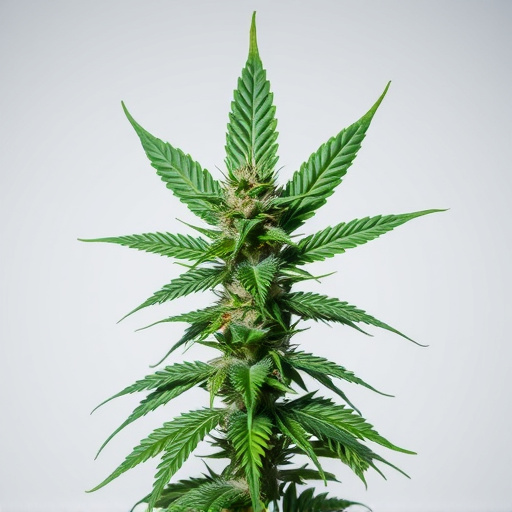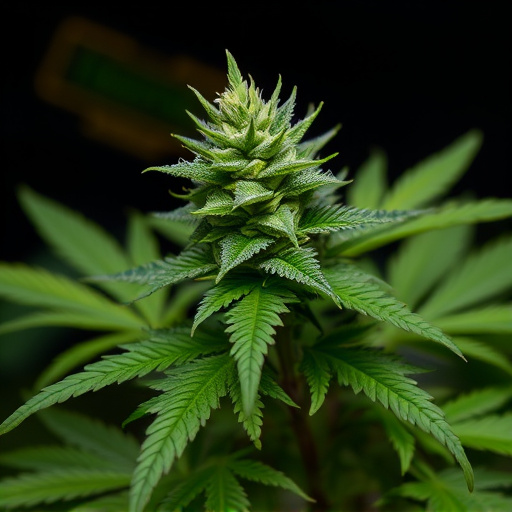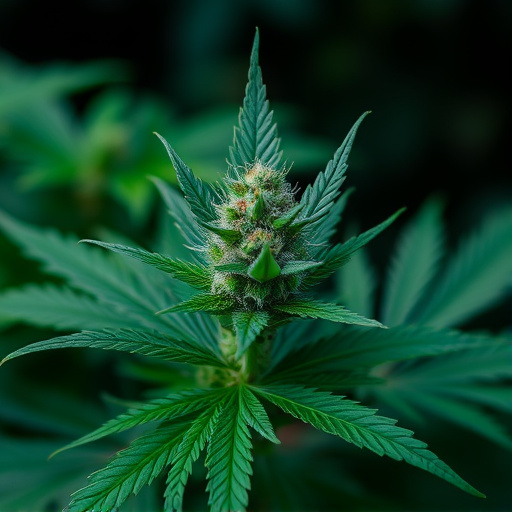Metabolism significantly impacts how quickly cannabis is cleared from an individual's system, with age, weight, gender, and health playing key roles. For those using cannabis strains for migraines, understanding these variations is crucial. Strains with higher CBD concentrations may be metabolized more slowly, potentially lengthening detection windows. Genetic differences in metabolic rates affect the effectiveness and detectability of cannabis treatments for migraines; different strains with varying cannabinoid profiles (THC/CBD) result in distinct detection times. This knowledge is vital for healthcare professionals and patients considering cannabis as a migraine treatment, balancing therapeutic benefits against legal consequences.
“Unraveling the complex factors that dictate cannabis detection times is essential, especially in the context of medical application areas like managing migraines. This comprehensive guide delves into the intricate web of variables affecting drug screening. From individual metabolic variations influenced by genetics and organ function to the unique characteristics of cannabis strains and their terpene profiles, each element plays a critical role in determining detection windows.
Additionally, external factors such as diet, exercise, and environmental conditions impact test results, highlighting the need for a holistic understanding of cannabis metabolism.”
- Metabolism and Individual Variations
- – Genetic factors influencing metabolism
- – Age, weight, gender, and their impact on detection times
Metabolism and Individual Variations

Metabolism plays a significant role in determining how quickly cannabis is cleared from an individual’s system. Everyone metabolizes substances differently, and this varies based on several factors, including age, weight, gender, and overall health. For instance, younger individuals may have faster metabolisms, leading to quicker detection times compared to older adults. Body mass index (BMI) also influences metabolism; those with higher BMIs might take longer to process cannabis due to the increased fat content in their bodies.
When it comes to cannabis strains for migraines, understanding these individual variations is crucial. Different strains have varying levels of cannabinoids like THC and CBD, which can impact how rapidly the body breaks down and eliminates the compounds. Certain strains with higher CBD concentrations might be metabolized more slowly due to the interaction between CBD and enzymes responsible for cannabis metabolism, potentially extending detection windows.
– Genetic factors influencing metabolism

The metabolic rate and subsequent detection times of cannabis can be significantly influenced by genetic factors, which vary across different cannabis strains. Each strain possesses unique chemical profiles, with varying concentrations of cannabinoids like THC and CBD. These compounds are responsible for the plant’s effects on the human body, including its potential benefits for conditions such as migraines. Individuals metabolize these compounds at different rates due to genetic predispositions, leading to variations in how quickly they can be detected in bodily fluids after consumption.
For instance, some cannabis strains known for their high THC content may result in faster detection times, particularly in individuals with a slower metabolic rate for these specific cannabinoids. On the other hand, strains rich in CBD might have longer detection windows due to its gradual breakdown and excretion. Understanding these genetic variations is crucial when considering cannabis as a treatment option for migraines or other medical conditions, as it can impact both the efficacy of the treatment and any potential legal implications related to drug testing.
– Age, weight, gender, and their impact on detection times

The impact of age, weight, gender, and other biological factors on cannabis detection times is a complex interplay that researchers are still unraveling. While studies have shown that age can influence how quickly cannabis is metabolized in the body, with younger individuals potentially experiencing faster detection times, other variables like weight also play a significant role. Lighter individuals may eliminate cannabis compounds more swiftly due to differences in metabolism and fat content.
Gender disparities further complicate matters. On average, women tend to metabolize certain cannabinoids differently than men, potentially leading to varied detection periods. This is particularly relevant when considering cannabis strains for migraines or other medical conditions, as the ideal dosage and efficacy can differ based on these factors. Understanding these nuances is crucial for individuals using cannabis therapeutically, ensuring safe and effective treatment options tailored to their unique physiology.
Understanding the factors that influence cannabis detection times is crucial for individuals seeking relief from conditions like migraines through cannabis strains. Genetic predispositions, age, weight, and gender play significant roles in how quickly and for how long cannabinoids remain detectable in the body. This knowledge empowers users to make informed decisions regarding dosage and strain choices tailored to their unique metabolic profiles. By considering these factors, individuals can optimize their therapeutic experiences while ensuring safe and effective cannabis use.














